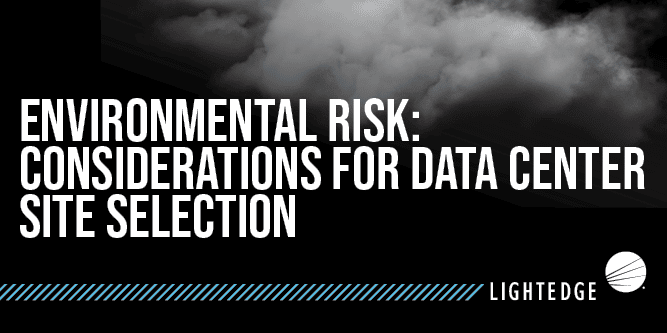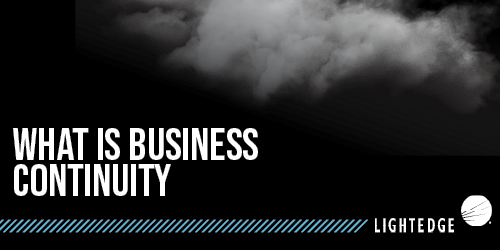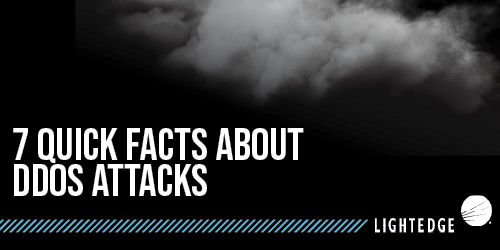Disaster Recovery Basics
January 13, 2022

Lightedge
Author

If we have learned anything from the last couple of years, it is to expect the unexpected. Whether it be a global pandemic, inland hurricane, cyber-attack, or zombie apocalypse… accidents happen. Regardless of the scale of disaster, an organization has as obligation to provide service, no matter what the circumstances are. This is the basis of Disaster Recovery.
Let’s dive deeper into the basics of what disaster recovery is, the importance of having a plan and things to consider when putting a strategy together.
What is Disaster Recovery?
Disaster recovery is the plan and execution of restoring mission critical functions in the event of disruption or disaster. Think back to when the pandemic hit in 2020. Did your organization have a plan in place to operate “business as usual”? Imagine if a fire burnt down your building, would you be able to recover the lost data?
Disruptions aren’t always as catastrophic as a natural disaster. It may be as simple as a storm knocking out the power, disrupting connectivity to your customers. Regardless of the unforeseen circumstance, it is vital for your organization to have a Disaster Recovery plan so your organization can resume normal operations and recover in the shortest amount of time possible.
Why is Disaster Recovery Important?
Now that you understand the basis of Disaster Recovery, why is it so important to have a plan? A Disaster Recovery plan is what can make or break your organization in the event of disaster. No matter the industry or the disruption, a halt in your daily business operations can be detrimental to your reputation, a cost burden, and can result in a loss of customer base. An ounce of prevention will always be worth a pound of cure.
What should be a part of your plan?
Many companies wait for disaster to strike to put a plan in place, making it too late to take action and difficult to recover. The best practice for Disaster Recovery is to plan for the worst and have a strategy in place. What exactly should you consider in your plan?
- Account for All Types of Disaster – Disaster comes in all shapes and sizes. In terms of Disaster Recovery, it is best to be prepared for all of them.
- Create a Business Continuity Planning Checklist – When disaster strikes, it is vital for your organization to continue to function. Download our whitepaper to know which provisions to include in your plan.
- Test. Test. TEST! – Even when you think you have solid plan that would prevent your organization from disruption, test again.
- Evaluate – Take a look at what went well and what could be improved. A plan is never set in stone and can evolve with any disaster that occurs.
DRaaS
If your organization does not have a plan in place, you are risking mission-critical systems, applications, and irreplaceable data. Disaster Recovery as a Service (DRaaS) is a model that protects your data and organization from disruption in the event of disaster. DRaaS providers are able to restore and backup your organizations infrastructure, leaving you with piece-of-mind knowing your data is safe and secure. Having a trusted partner to help your implement a DRaaS strategy may be what your organization needs.
Let Lightedge be Your DRaaS Provider
We get it, preparing for the unknown can be overwhelming and a burden on your organization. Thankfully, we are here to help. Lightedge is committed to keeping your data protected and our comprehensive solutions will ensure uninterrupted performance, no matter what the threat. If you are interest in learning more, we would love to set up a time to discuss what challenges your organization may be facing. Our team of business continuity experts are standing by to help you create a Disaster Recovery plan to meet your specific requirements that bests fits your business model.


